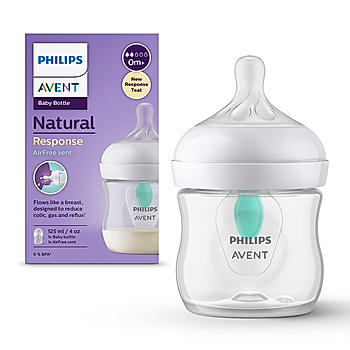While breastfeeding is generally quite a simple process, a few important things must always be kept in mind. There are numerous different breastfeeding positions that can be used. All of them have different advantages, and since all babies are different, it is important to find what works best for mom and baby. Read this article to learn more.

Top 10 Breastfeeding Positions For Mothers
While breastfeeding is generally quite a simple process, a few important things must always be kept in mind. There are numerous different breastfeeding positions that can be used. All of them have different advantages, and since all babies are different, it is important to find what works best for mom and baby.
Why breastfeeding positions are important?
Especially for a new-born, the nursing positions that a mum may choose will greatly impact the baby. These positions are important because while babies largely function on instinct, not all babies are the same and they may feel more comfortable latching, suckling or unlatching from a particular position. In addition, certain positions may make your baby more prone to problems such as spitting up or indigestion, or may even make them unable to feed at all. It is important to try a number of breastfeeding positions for new-borns for this very reason, so you can find the perfect one for both you and your baby. Finding the perfect baby feeding position will make every feeding a snap, and will help you establish an effective daily routine around feedings. It will also avoid complications for both you and your baby, such as discomfort, low weight gain, indigestion, cracking or soreness, and many more.
Laid back/Reclined
This is the most natural one most moms try first. Lie flat on your back, or reclined, and place baby on your chest.
Cradle Hold
This is the most common breastfeeding position. Sit upright, with baby positioned on their side, head and neck along your forearm and body against your stomach. Using a breastfeeding pillow across your lap may help avoid straining your back or shoulders.
Cross-cradle hold
Similar to the cradle hold, except using the hand opposite the side your baby is being fed from. This allows for support for baby’s neck and shoulders, and lets them tilt their head to latch. This position is good for smaller babies and those with latching problems.
Rugby Ball Hold
Sit with your baby resting along your forearm with their body tucked along your side, feet point in the direction of your back. This position supports your baby well and gives you plenty of control. Being tucked in so close to your body helps your baby get a sense of safety and comfort that may make it easier for them to feed.
Side-lying position
This position is ideal for night feeding and breastfeeding in bed or on the sofa. It can be more comfortable than sitting if you have stitches or any injuries. Lie down on your side and place your baby on their side, facing you.
Perpendicular recline
If you’ve had a caesarean delivery and can’t find a suitable position, reclining back with your baby’s body across your shoulder may help you nurse without putting any pressure on your abdominal area.
Koala Hold
If your baby needs to be upright due to reflux or an ear infection, this is the perfect position to avoid discomfort. Your baby straddles your thigh or hip, with their spine and head upright facing you.
Dangle Feeding
This position may seem awkward at first, but using it once in a while can help avoid discomfort from blocked milk ducts or conditions like mastitis. To dangle feed, simply lie your baby on their back and crouch over them on all fours.
Nursing a sling
For older children, for when you’re out and about, or when struggling with muscle strain, breastfeeding your baby in a sling can ease the pressure on you. This generally works best for babies experienced with nursing that can hold their own heads up. Ensure that you can always see your baby’s face clearly and their chin is not pressed against their chest.
Dancer Hand
For babies that struggle to stay latched, or who have low muscle tone, this position allows a great degree of support and control, along with a perfect view of the latch. To do this, you must support your breast with three fingers of one hand, while supporting their chin and cheeks with your thumb and index finger.
Latching your baby onto your breast the right way
A proper latch is a crucial part of ensuring smooth feeding sessions. Without a proper latch, your baby may end up underfed or with excess gas, while you may end up with soreness and severe discomfort over time. Different breastfeeding positions may make it easier for your baby to latch properly, so do try new things. Here a few different tips you can use to help your baby get a good latch.
- Use a comfortable chair
- Use a breastfeeding support pillow (or any other)
- Try tummy-to-tummy nursing positions
- Bring your baby to you, do not lean towards them
- Keep your baby’s ear, shoulder and hip aligned straight
- Aim your nipple towards baby’s upper lip/nose, not the middle of the mouth
- Make sure baby’s chin is not down to their chest
- Do not force the nipple and wiggle the mouth open – move back and try again
- Try and get as much of the areola in to your baby’s mouth as possible
Unlatching your baby
If you are suffering from severe soreness after every feed, you may need to give your baby guidance when it comes to unlatching. Generally, most babies will unlatch on their own once they have consumed their fill of breastmilk. However, it is not uncommon for some babies to stay latched on to mom’s breast without suckling, or to continue suckling after mom’s milk has been exhausted. While there may not be any immediate discomfort, it is likely that excessive suckling may lead to sore or cracked nipples in the long term. In this case it is important to help your baby unlatch. It is very important to break the suction of the latch before pulling your baby away, as this may lead to even more discomfort. Gently place your finger in between your breast and their gums to break the suction, before guiding baby’s head away from your breast gently.
Breastfeeding positions to avoid
While different breastfeeding positions have different benefits and disadvantages there are a few key things to always keep in mind when deciding between breastfeeding positions for new-borns. If your baby is not positioned properly, the stimulation of your breasts may not be sufficient to express enough milk, which can lead to severe problems long term. In addition, improper positioning can lead to physical discomfort for both mom and baby, along with excess gas build-up and sore nipples. Keep the following tips in mind, no matter what nursing position you choose.
Do not hunch over baby
Unless you are dangle feeding, you should not hunch over your baby. Keep your back straight and bring baby up to your breast to ensure a better latch and less spinal discomfort.
Make sure their spine is aligned
Make sure that baby’s body and head are not facing in different directions. Not only does this make it difficult for them to swallow, but is usually uncomfortable for them, and may make it harder for you to find a comfortable position as well.
Ensure they are not too far from the breast
If baby’s body is too far from yours, they may still manage to latch on, but they will pull on your nipple while feeding. This may not only cause discomfort, but may also lead to them not getting enough milk during feeding time.
Breastfeeding should not be an uncomfortable process, especially once you are more accustomed to it and settle into a routine with your baby. Most common issues with breastfeeding are a matter of experimenting with different positions and techniques to find what works best for your and your baby’s individual needs. Ultimately, the goal is to find the perfect balance for you and your baby, and soon breastfeeding will be a snap.




